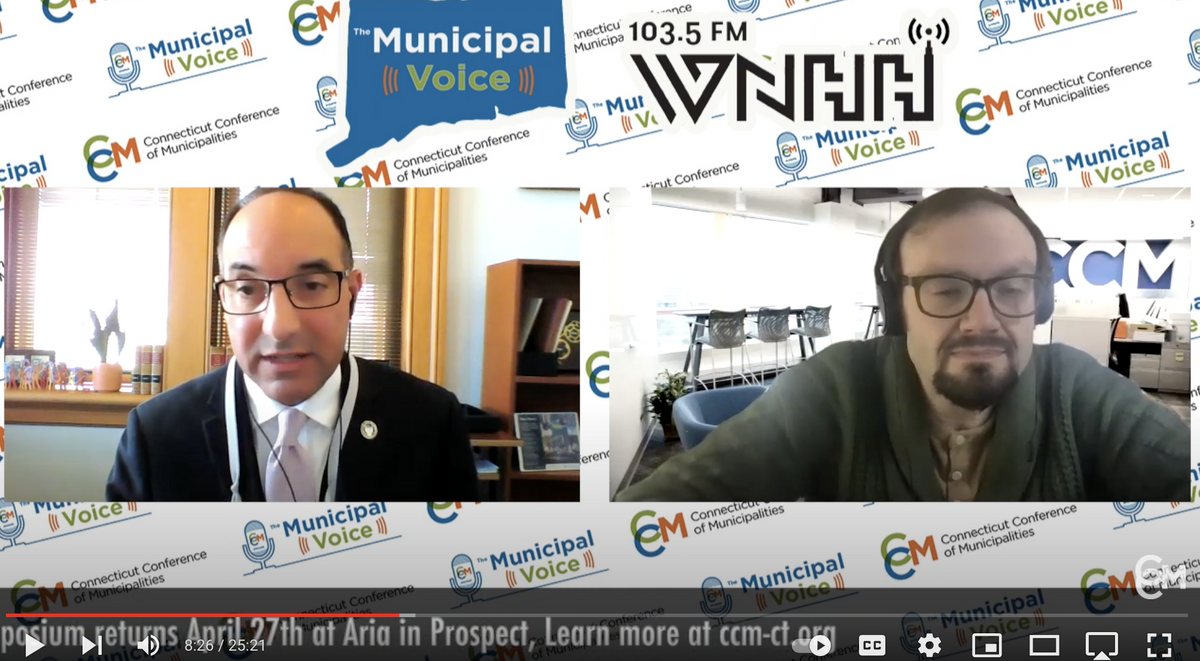
Michael Piscitelli remembers a time when in order to save Union Station, a tree had to be cut down.
The economic development Administrator for the City of New Haven recalled, during an appearance on the “Municipal Voice,” a coproduction of the Connecticut Conference of Municipalities and WNHH FM, this turning point in Union Station’s important history.
“This Cass Gilbert, beautifully architecturally designed train station was at the risk of demolition,” he recalled, “and they cut down the tree and renovated the entire station.”
That was four decades ago, and the time is ripe for renovation once again.
Not only has New Haven made a deal with the state on a complete renovation of the train station, but there are major economic expansion projects underway on Tweed Airport – which has hit a bit of turbulence — and the Route 34 Connector.
This, Piscitelli noted, was crucial in rebuilding the community after the notorious Model City-era emphasized car-oriented infrastructure over housing.
Click on the video to watch the interview with Michael Piscitelli on "The Municipal Voice."
According to the well-documented Route 34 plans, in which New Haven is filling in a mini-highway corridor, ten acres will open up, the School of Medicine will connect with Union Station and Downtown, and businesses will move back into the space. Office towers at 100 and 101 College St. will house biolabs and bioscience incubators that could be transformative in the public health space.
Just as important as the job creation, Piscitelli said, that there will be a café and a public plaza in the area, and very little parking on site.
“It’ll be a seamless walk from the Hill neighborhood and Downtown,” he said. “We’re learning from experience and other innovation centers to really create an interesting design that both supports the economy as it’s coming together, but also be something that our neighborhood feels sensible belonging there.”
This shift marks a long trend away from car-centric 20th century planning. Piscitelli said that the first bike lanes in New Haven were almost a novelty; today the city has one of the highest percentages of residents who walk or bike to work.
Novel ideas like closing roads and putting in outdoor spaces are just some ways New Haven is capitalizing in reusing roads. Closed-off blocks on Orange Street in Ninth Square and Central Avenue in Westville became hotspots for programming during the pandemic, while closing down a lane on College Street boosted restaurants.
Piscitelli also applauded the recent state bill allowing outdoor dining to continue. He hopes to see more than 50 applications this year, which would outpace last year’s permit requests.
The overall feeling in New Haven is one of creating a virtuous cycle: Workforce development will spur growth will spur housing will spur growth.
His key example for this is Long Wharf.
On Long Wharf, there’s still work to be done -– the area is a flood plain and needs protection from coastal storm surges, but it’s also got some of the highest prospects for development. A new residential tower is in the works. The infrastructure comes first because the federal government is investing in coastal resilience work, he said.
“We’re making this pivot as a global city,” Piscitelli said, “New Haven has moved in this direction for many, many years. Taking that next step and understanding that there are several more levels in this trajectory is very, very important for us.”


New Haven will, indeed, be a global city shortly. It will be under water (literally), just like Dacca in Bangla Desh, Shanghai in China, Amsterdam in the Netherlands, Jakarta in Indonesia, Lagos in Nigeria, and many, many other mega cities worldwide too numerous to mention.